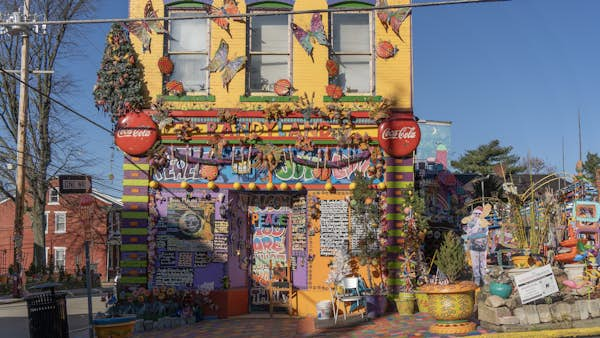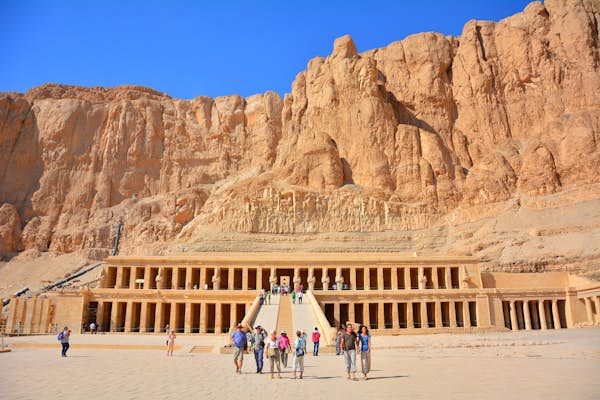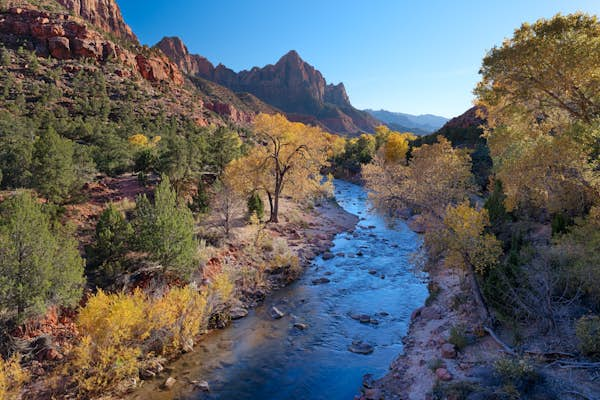An industrial powerhouse turned university and medical hub, Pittsburgh is a shining star of urban transformation in the USA.
Sites once occupied by the brawny, pollution-belching steel mills that powered the industrial revolution have given way to bike paths, arts institutions, tech companies and exciting districts filled with bars, restaurants and galleries. What’s more, you can discover much of what sets this city apart – think street art, urban hikes, live music and more – at no cost. The city even makes public transport gratis, through its Free Fare Zone.
If all this inspires you to discover this great American city, there’s no need to save up for your trip. These are 13 of the best free things to do when you’re next in Pittsburgh.

Pittsburgh is one of the best cities to visit next year. See our full list of Best in Travel 2025 winners.
1. Admire the glittering skyline from Emerald View Park
To enjoy fabulous free views over the Pittsburgh skyline – truly one of the most beautiful in the USA – head up the bluff to Emerald View Park, which links up the hillside neighborhoods of Duquesne Heights, Mount Washington and Allentown, and includes several significant viewpoints. At the top of the hill, you’ll find public art displays and suggested hiking routes. Learn more about Pittsburgh’s history on a 1.5-mile-long walk along the Grand View Scenic Byway.
2. Get into the flow at Allegheny Landing
This small park lets you admire the flow of the “city of rivers.” Allegheny Landing was one of the first urban riverfront sculpture parks in the country, and the modern sculpture installation with waterfront biking and walking trails remain an altogether lovely slice of city green space. It’s pleasant in spring and autumn, and dramatic in winter snow.
3. See the street art at Rivers of Steel Homestead Streetside Gallery
Committed to preserving Pittsburgh’s industrial and cultural heritage through exhibitions, tours and events, Rivers of Steel is one of Pittsburgh’s most admirable cultural enterprises. Perhaps nothing evokes the might of the city’s past better than their tour of the Carrie Blast Furnaces – though that will run you $25 per person. For a free introduction to how this team presents the city’s past in vivid ways, check out the Homestead Streetside Gallery, which will guide you through the Homestead neighborhood via a series of murals created by local artists.

4. Celebrate the weird exuberance of Randyland
This outdoor art museum is pure love and happiness. Consisting of a giant, mural-festooned yellow house and object-packed porch and garden, Randyland is a local institution that draws visitors from around the region – and the world. The overall vibe is one of a man who has embraced the world’s weirdness in its entirety. You can’t forget it if you’ve seen it. And if you haven’t seen it, you should.
5. Feel the idealism of the Nationality Rooms at the Cathedral of Learning
Soaring 42 stories, the Gothic tower at the Cathedral of Learning, part of the University of Pittsburgh, is a famous city landmark. High up in this this one-of-a-kind academic building, the delightful “Nationality Rooms” are an idealistic if somewhat kitsch celebration of academic exchange, with some 30 classrooms decorated to evoke localities ranging from Russia to Syria to Africa to Ireland. Make a reservation in advance to tour the rooms, or take a digital tour, available online anytime.

6. Check out the gears at Bicycle Heaven Museum
Bicycle Heaven is the largest bicycle shop in the world – and it also happens to contain a free bicycle museum with a fascinating collection of nearly 6000 vintage bikes from all over. The best part? It’s free to visit the museum (donations welcome). And when you’re done browsing, you can pick up any bike gear you need.
7. Find out where the (man-made) wild things are a the Center for PostNatural History
“Postnatural history,” according to Rich Pell, the artist-founder of this quirky museum, is the field of plants and animals designed by humankind. At this unusual institution, you’ll learn all about spider silk–making goats, selective breeding and more. While we wouldn’t recommend it as a first-date spot, it’s definitely a fun and unconventional place to learn about the wild side of human endeavors – the pretty, the ugly and everything in between. If you like what you find, consider picking up Pell’s illustrated first book, This is NOT an Artifact, available on-site.

8. Get strumming at Banjo Night at Elks Lodge
Any visit to the Pittsburgh Banjo Club on the Northside will reveal why Pittsburgh is known as the “Paris of Appalachia.” Starting at 8pm every Wednesday night at the Elks Lodge, the stage is packed with players and the audience sings along to all the banjo classics. Reservations are recommended: you won’t want to miss this.
9. See how a steel magnate lived at the Frick Art and Historical Center
It’s perhaps appropriate that the coal and steel magnate Henry Clay Frick – perhaps best known for the astonishing art collection he amassed, permanently on display at NYC’s Frick Collection – built his career, and his fortune, in Pittsburgh, the Steel City. While tours of Frick’s former house at the Frick Art and Historical Center require a fee, the institution also features a small permanent art collection as well a display of the mogul’s vintage cars – always free to visit.

10. Embrace the grandeur of Carnegie Library of Pittsburgh
A city that takes pride in its fantastic civic institutions, Pittsburgh does not lack for beautiful, ambitious buildings. And the main branch of the Carnegie Library of Pittsburgh might be the epitome of the lot. Think marble stairs leading to a beaux-art facade, and a main reading room with a barrel-vaulted, coffered ceiling. Whether you’re researching your next book or just skimming the paper, reading becomes an elevated experience here. It’s also a nice spot to relax and rest in between sessions exploring around the Carnegie Museums, part of the same (grand) complex.
11. Feel the history at Fort Pitt Block House
A speck in Point State Park, where the three mighty rivers that define Pittsburgh meet, Fort Pitt Block House from 1764 is the last remnant of Fort Pitt. It’s the city’s oldest building and a national historic landmark with no admission fee (the lovely, lively park at “the Point” is also, naturally, free of charge). If you’re keen to learn more about the French and Indian War of the mid-18th century, and the key role Pittsburgh played in it, tickets to the nearby Fort Pitt Museum cost $10.

12. Take an urban hike through Frick Park
At 644 acres, Frick Park is the largest urban park in Pennsylvania, and hikers could lose themselves for hours on the web of wooded trails. The park is also home to Nine Mile Run, a former dumping ground that has been rehabilitated into a babbling brook. Frick teems with wildlife, especially birds and deer, and the slopes have become favorites among local mountain bikers.




